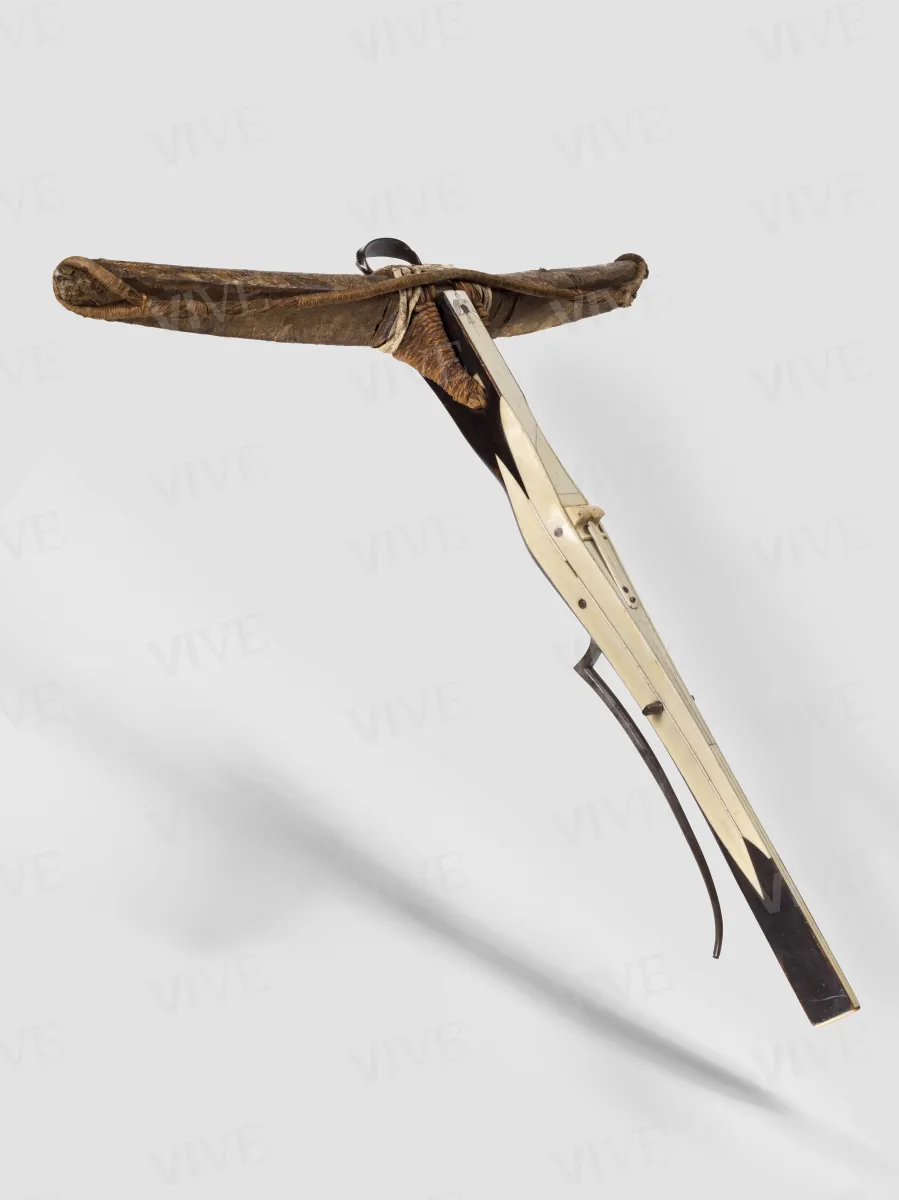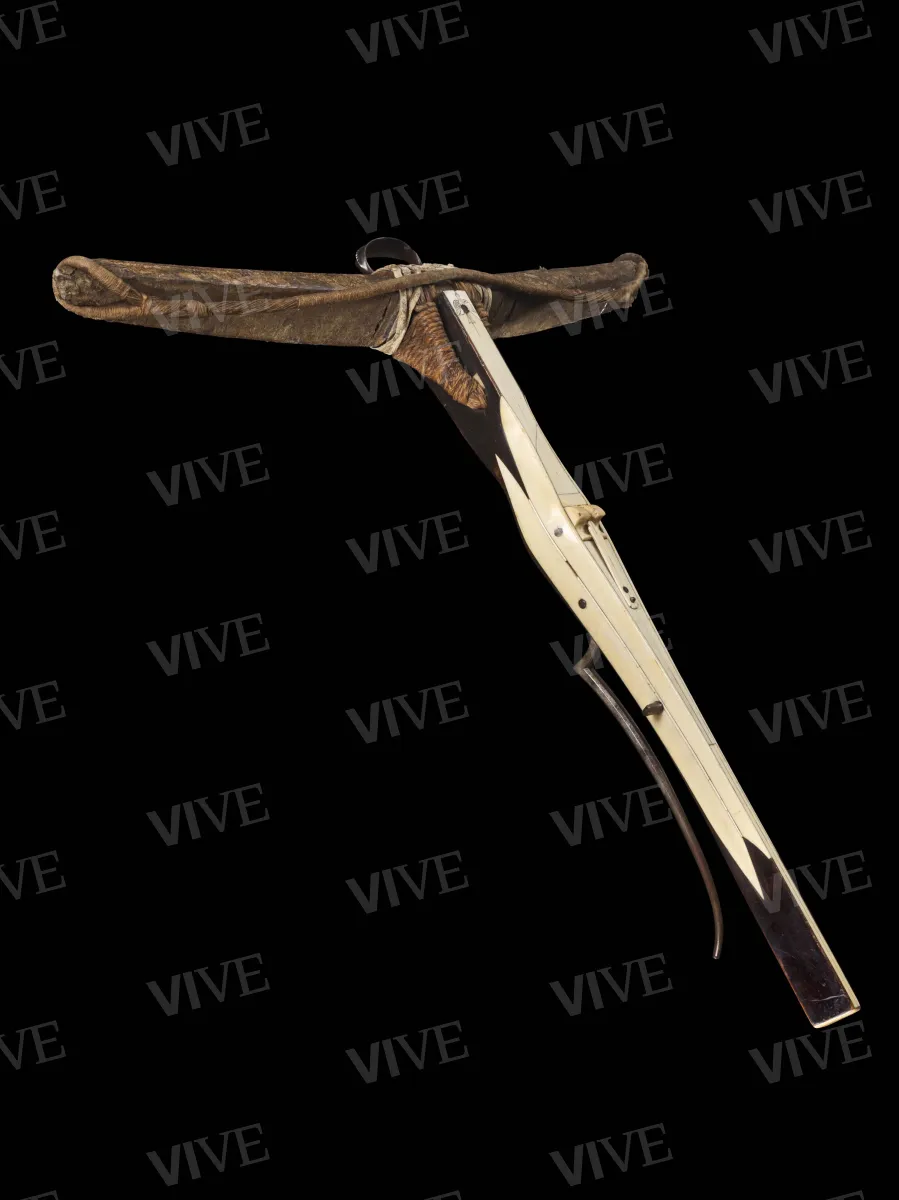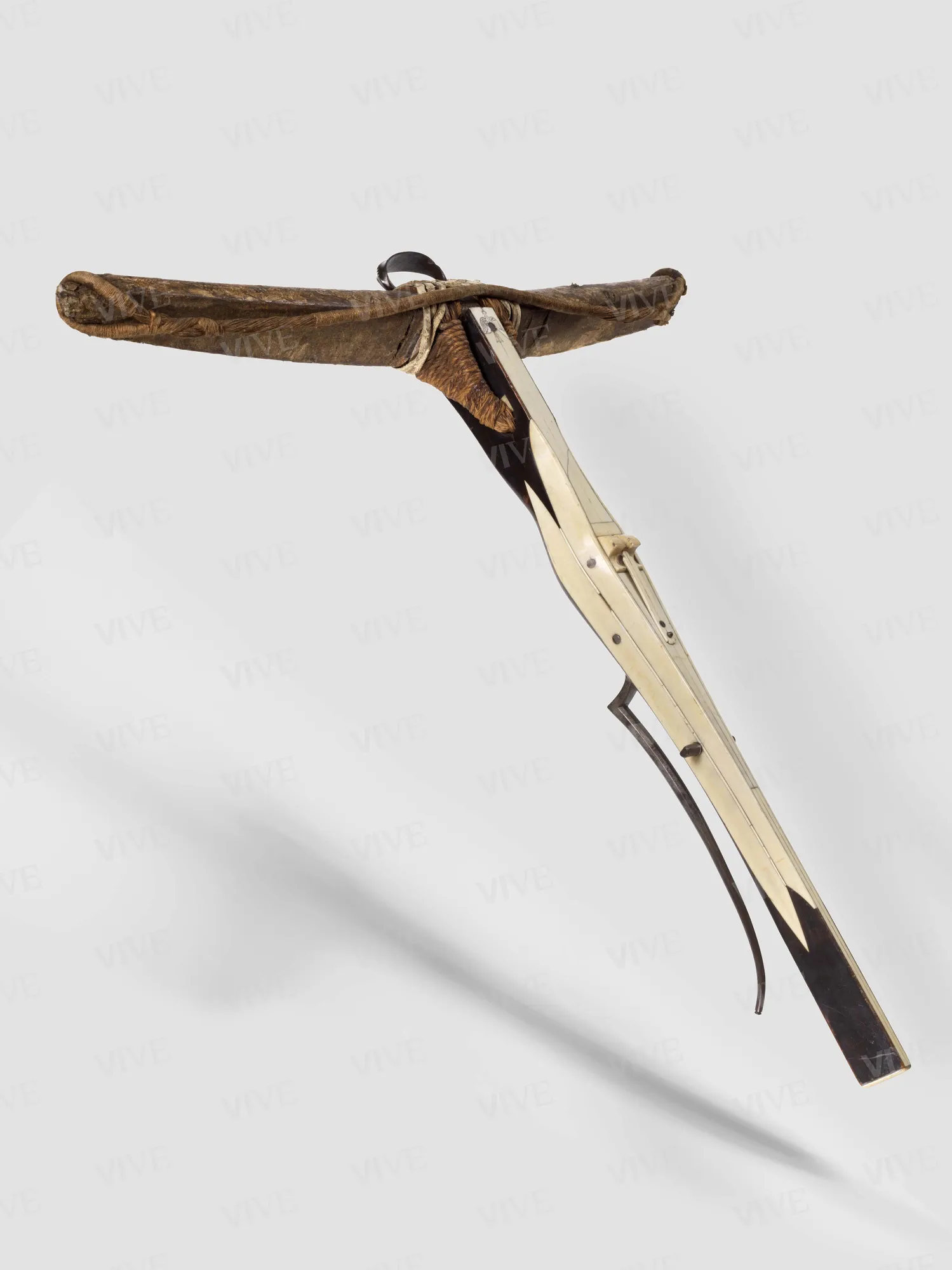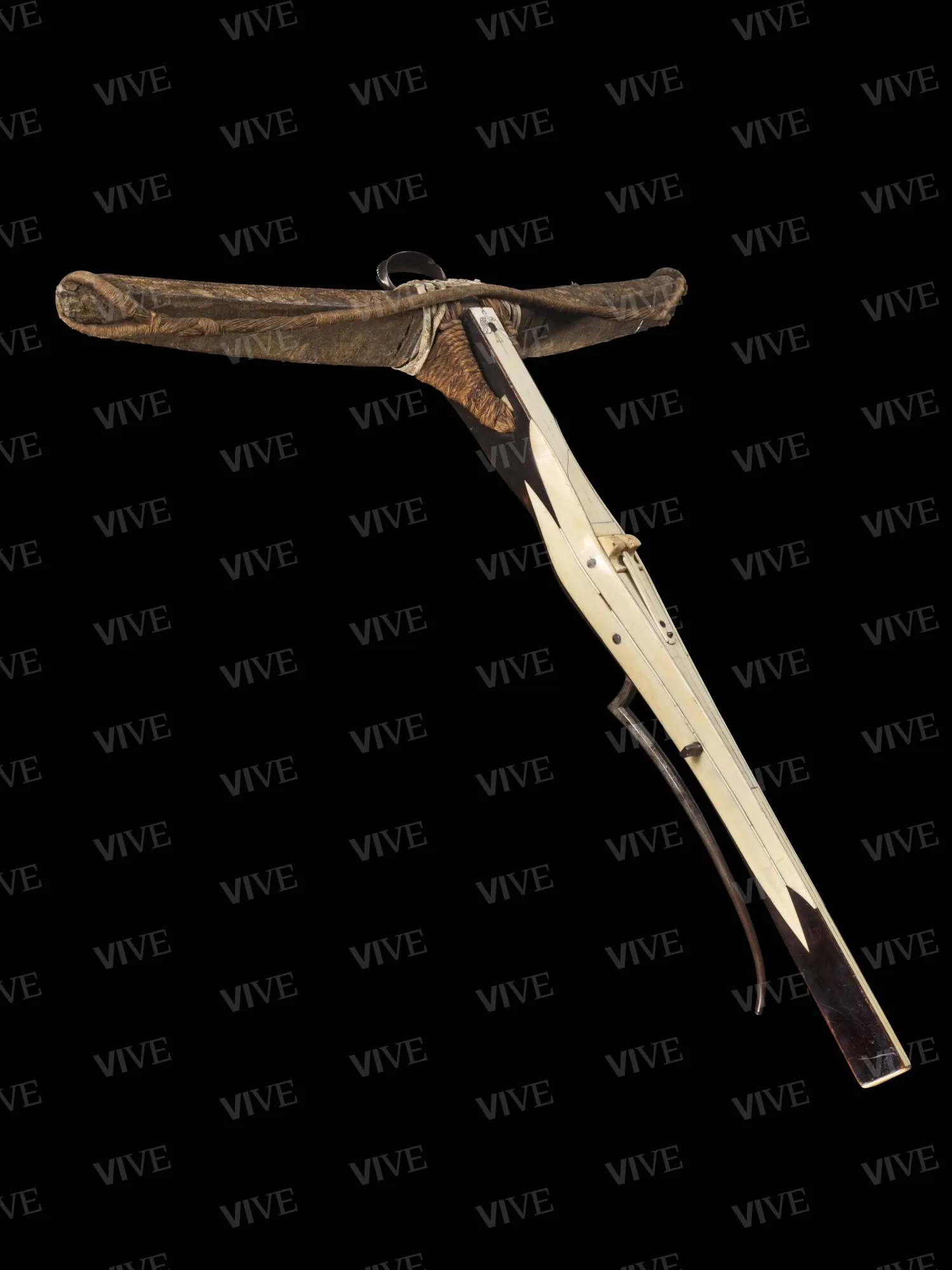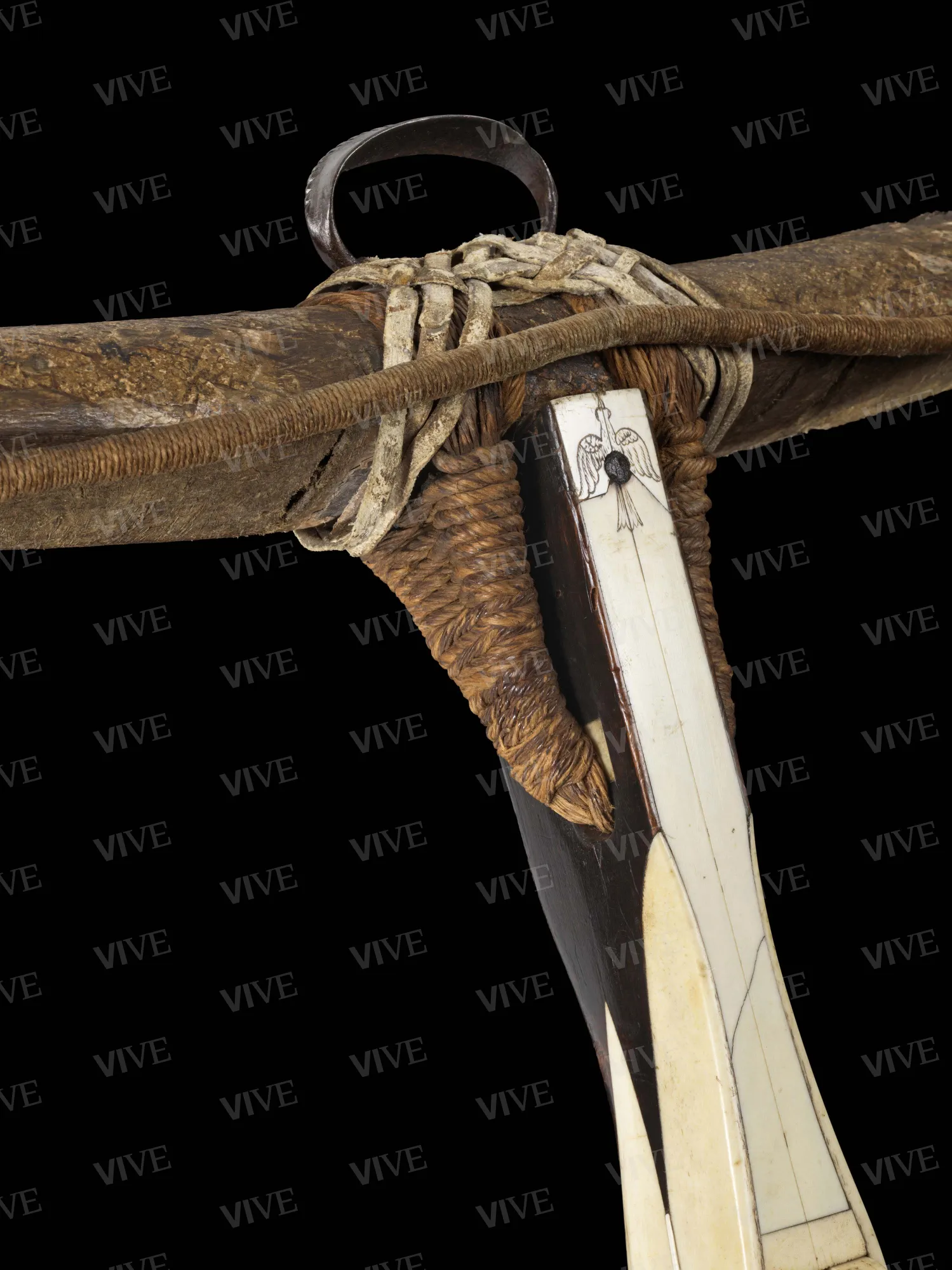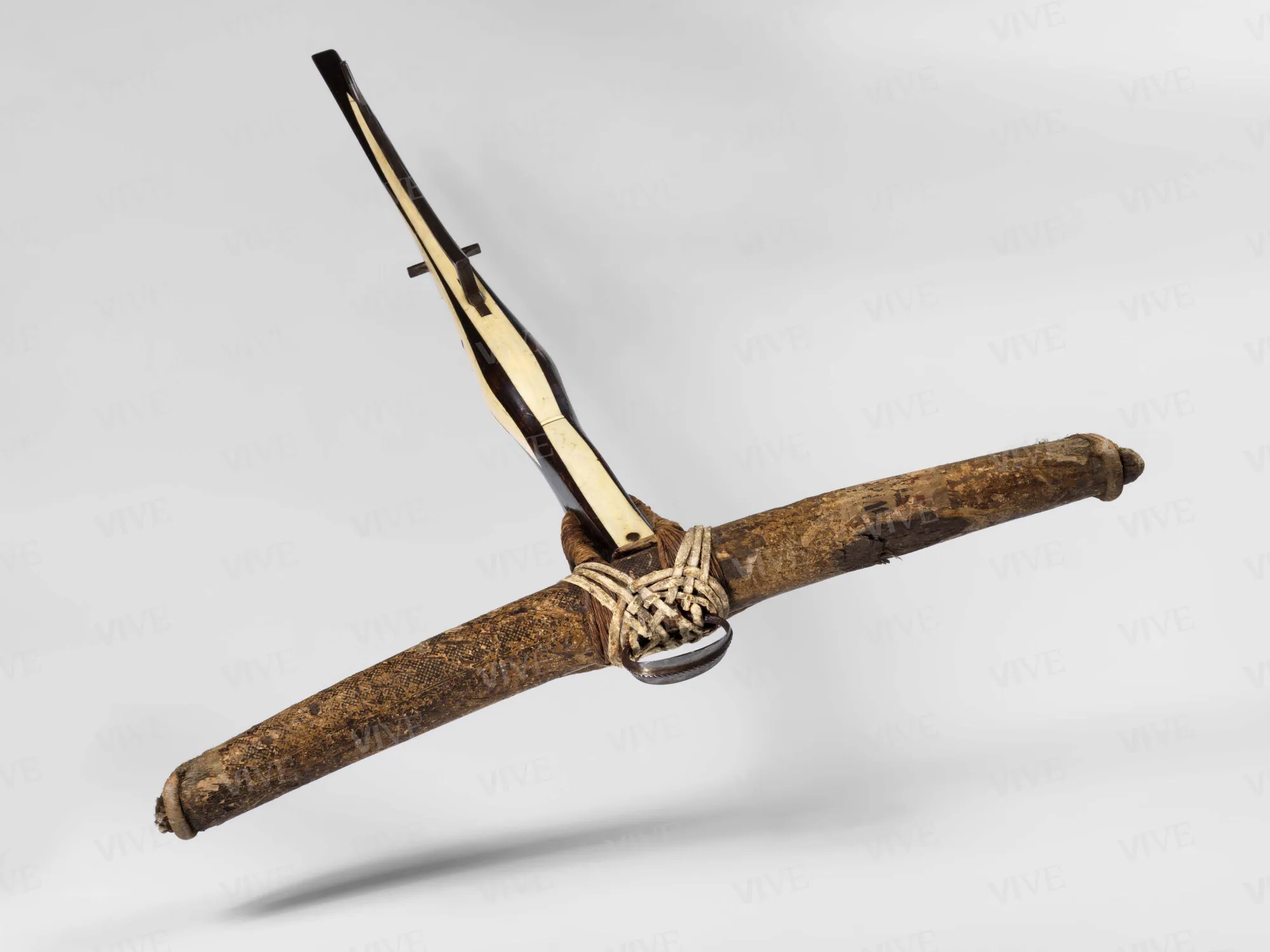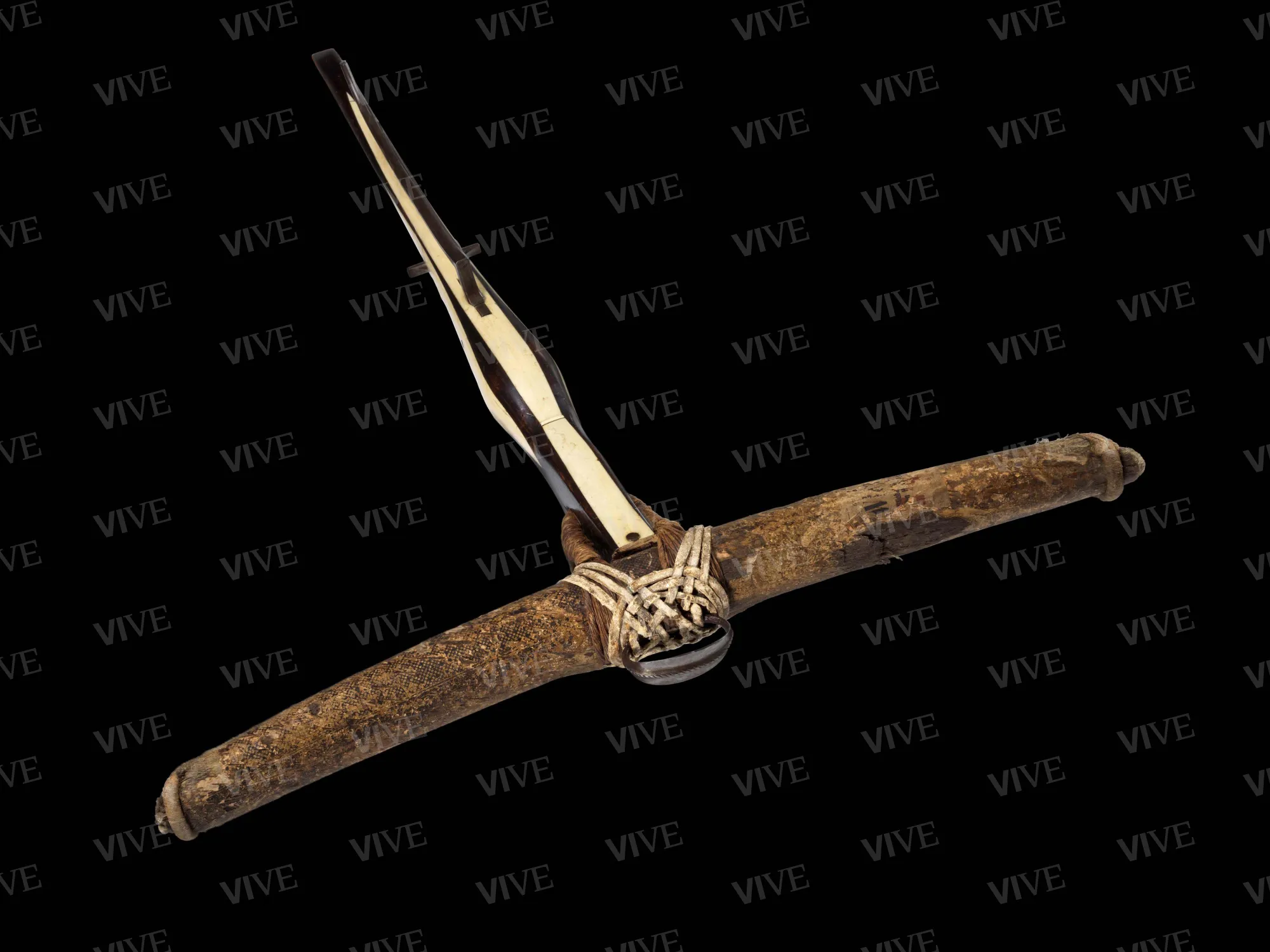Crossbow
Austrian production 1425–1475
The crossbow, a weapon employed for both hunting and warfare, has origins dating back to ancient Egypt. However, it reached peak popularity between the Middle Ages and the Renaissance. This particular specimen, intricately inlaid with bone and dark wood, was crafted in Austria around the mid-fifteenth century. Remarkably, it still retains its original bow, covered in paper, as well as the string used for drawing and shooting arrows.
The crossbow, a weapon employed for both hunting and warfare, has origins dating back to ancient Egypt. However, it reached peak popularity between the Middle Ages and the Renaissance. This particular specimen, intricately inlaid with bone and dark wood, was crafted in Austria around the mid-fifteenth century. Remarkably, it still retains its original bow, covered in paper, as well as the string used for drawing and shooting arrows.
Details of work
Catalog entry
Crossbows were widely used since the Middle Ages and produced all over Europe. This crossbow features a horn lathe covered with paper and secured to the stock with a thick rope tie. The vertical stock, also known as the tiller, is mostly veneered in horn, while the end part is made of dark wood. The pins (or stops) and the handle (or key) located on the nut, the central and widest part of the crossbow, are carved from horn. An iron ring is attached to the lathe using light-colored leather strips (di Carpegna 1969, p. 71, n. 428; di Carpegna 1976, p. 71). It is well preserved, with only minor tears on the paper-covered part of the lathe.
The crossbow is an ancient weapon that was already in use by the Egyptians and Greeks. It saw extensive use during the Crusades in the Middle Ages and is documented in Italy from at least the twelfth century. Infantrymen used it to fire long, accurate arrows from a distance, reducing the need for direct combat. The popularity of the crossbow declined with the advent of firearms, but it continued to be used for hunting (Gelli 1900, pp. 107–118; Borgatti 1930). It is not known whether this particular example of a crossbow was used for hunting or warfare (Scalini 2018, p. 276, n. X.3).
This crossbow can be compared to similar examples, which are characterized by stocks inlaid with alternating bone and dark wood, with the grafts of the two materials forming pointed shapes. One example preserved at the Metropolitan Museum in New York (Breiding 2013, pp. 21–22, n. 2) includes not only the stock but also a lathe made of horn covered with paper, and a metal ring secured by leather ties. Another example is from the collection of Carl Otto Kretschmar von Kienbusch, now housed in the Philadelphia Museum of Art (inv. 1977–167–1001).
The bird engraved where the stock joins the lathe may be a manufacturing mark, though there is currently no evidence to support more specific conclusions.
This crossbow is part of the collection of Prince Ladislao Odescalchi (1846–1922). The collection was purchased by the Italian State in 1959 and subsequently housed in Palazzo Venezia in 1969. It does not originate from a familial armory but rather from deliberate acquisitions made on both national markets (Florence, Rome) and international markets (Paris, London) starting in the late nineteenth century (Barberini 2007), reflecting Odescalchi’s individual preferences.
Giulia Zaccariotto
Entry published on 27 March 2025
State of conservation
Good.
Coats of arms, emblems, and marks
A bird with outstretched wings is engraved on the horn at the intersection of the two arms.
Provenance
Rome, Collezione Ladislao Odescalchi (Odescalchi, n. 1374);
bought by the Italian State, 1959;
Roma, Museo Nazionale di Palazzo Venezia, 1969.
Exhibition history
Rome, Museo Nazionale di Palazzo Venezia, Antiche armi dal sec. IX al XVIII. Già Collezione Odescalchi, maggio-luglio 1969;
Rome, Museo Nazionale di Castel Sant’Angelo; Roma, Museo Nazionale del Palazzo di Venezia, Armi e potere nell’Europa del Rinascimento, July 26–November 11, 2018.
References
Gelli Jacopo, Guida del raccoglitore e dell’amatore di armi antiche, Milano 1900;
Borgatti Mariano, Balestra, ad vocem, in Enciclopedia Italiana Treccani, Roma 1930;
di Carpegna Nolfo (a cura di), Antiche armi dal sec. IX al XVIII. Già Collezione Odescalchi, catalogo della mostra (Roma, Museo Nazionale di Palazzo Venezia, maggio-luglio 1969), con schede a firma del curatore, Roma 1969, p. 71, n. 428;
di Carpegna Nolfo, Le armi Odescalchi, Roma 1976;
Barberini Maria Giulia, La collezione Odescalchi di armi antiche: storia della raccolta del principe Ladislao, in «Bollettino d’arte», s. VI, XCI, 2006 (2007), 137/138, pp. 101-114;
Fossà Bianca, Studio conservativo delle armi e armature Odescalchi. Nuove metodologie per la schedatura di una collezione, in «Bollettino d’arte», s. VI, XCI, 2006 (2007), 137/138, pp. 115-142;
Breiding Dirk H., A Deadly Art: European Crossbows, 1250-1850, New York 2013;
Scalini Mario (a cura di), Armi e potere nell’Europa del Rinascimento, catalogo della mostra (Roma, Museo Nazionale di Castel Sant’Angelo; Roma, Museo Nazionale di Palazzo Venezia, 26 luglio-11 novembre 2018), con schede a firma del curatore, Cinisello Balsamo 2018, p. 276, n. X.3.

